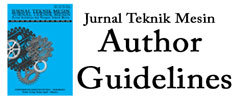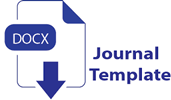Impact of Injection Duration and Injection Timing Variations on Torque and Power Output of the Ken Arok Urban Car Utilizing E100 Ethanol
DOI:
https://doi.org/10.9744/jtm.21.2.43-50Keywords:
Power, Injection Duration, Torque, Injection TimingAbstract
State Polytechnic of Malang (Polinema) actively participated in the energy-efficient car competition. The Polinema team has developed an energy-efficient car called Ken Arok, which competes in the urban ethanol class (Internal Combustion Engine) concept. This class emphasizes using internal combustion engines as the driving force and ethanol as the fuel. Ken Arok won fifth place in the competition due to obstacles in the programmed ECU program, especially in the injection duration. This study examines the effect of the interaction between injection duration and injection time variations on the torque and power output of the Ken Arok urban car fueled by E100 ethanol. An experimental approach was used in this study. A modified motor, converted into an energy-efficient urban car, was tested. The injection duration mapping was varied in multiples of 2 ms, with values ranging from 2 ms less than the standard to 2 ms more than the standard. Likewise, the injection time was varied in multiples of 2 degrees, including 2 degrees less than the standard and 2 degrees more than the standard. The dyno tester measured the torque and power generated under these conditions. The main objective of this study was to identify the optimal torque and power settings for the Ken Arok energy-efficient engine. The highest torque value recorded was 10.13 N.m, achieved at 6000 rpm when using an injection duration of 2 ms more than the standard (9.06 ms) and an injection timing advanced by 2 degrees (3580). The peak power output reached 8.7 HP at 6000 rpm under compression injection duration plus 2 ms (9.06 ms), and when the injection was advanced by 20 (3580).
References
I. Kristanto, “Kemandirian dan kedaulatan energi,” Kompas media, Jakarta, p. 1, Mar. 17, 2021. [Online]. Available: https://www.kompas.id/baca/lembaga/2021/03/17/kementerian-energi-dan-sumber-daya-mineral
I.G. Wiratmaja & E. Elisa, “Kajian peluang pemanfaatan bioetanol sebagai bahan bakar utama kendaraan masa depan di Indonesia”, J. Pendidik. Tek. Mesin Undiksha, vol. 8, no. 1, pp. 1–8, 2020, doi: 10.23887/jptm.v8i1.27298.
M.N. Sasongko, ”Pengaruh presentase etanol terhadap daya dan konsumsi bahan bakar mesin pembakaran busi”, J. Energi dan Manufaktur, vol. 9, no. 2, pp. 147–149, 2016.
S.A. Anggraini, S. Yuniningsih, M.M. Sota, ”Pengaruh PH terhadap kualitas produk etanol dari molasses melalui proses fermentasi”, J. Reka Buana, vol. 2, no. 2, pp. 99–105, 2017.
J. Jusnita & Denur, “Perbandingan performa mesin dengan menggunakan sistem pengapian ECM racing pada motor New Cb 150 dan Old Cb 150”, J. Surya Tek., vol. 6, no. 1, pp. 37–42, 2020, doi: 10.37859/jst.v6i1.1865, doi: 10.37859/jst.v6i1.1865
N. Aisyah, “Daftar universitas pemenang kontes mobil hemat energi 2022,” detikEdu, Surabaya, p. 1, Nov. 07, 2022. [Online]. Available: https://www.detik.com/edu/edutainment/d-6392673/daftar-universitas-pemenang-kontes-mobil-hemat-energi-2022-ada-kampusmu
A.V. Robbany, “Analisis bahan bakar bioetanol E100 dari limbah kulit pisang terhadap performa mesin sepeda motor matic 4 tak”, in Seminar Nasional Rekayasa Teknologi Manufaktur, Malang: Prosiding SNRTM, 2021, pp. 39–44
Y.A Winoko & S. Syahirin, “Eksperimental campuran etanol 96 persen dengan premium terhadap kinerja mesin”, J. METTEK, vol. 7, no. 2, p. 93, 2021, doi: 10.24843/mettek.2021.v07.i02.p05.
A. Rizky, “Pengaruh perubahan ignition timing dan injector timing terhadap daya dan konsumsi bahan bakar pada mesin 4 langkah 1 silinder,” Malang, Politeknik Negeri Malang, Indonesia, 2020.
A.H. Monasari, R. Farida, N.N. Firdaus, ”Pengaruh manipulator tekanan bahan bakar mesin diesel common rail ditinjau dari kebisingan & emisi gas buang”, Auto Tech J. Pendidik. Tek. Otomotif Univ. Muhammadiyah Purworejo, vol. 18, no. 1, pp. 1–9, 2023, doi: https://doi.org/10.37729/autotech.v18i1.3077.
A. Dimas, D. Wiradika, R. Arif, R. Saleh, D. Puspita, “Analisis pengaruh ignition timing dan injection timing terhadap unjuk kerja mesin bensin pada Yamaha Vixion 150 CC”, Prosiding Seminar Nasional Riset Teknologi Terapan, Yogyakarta, Universitas Gadjah Mada, pp. 1–6, 2023.
T. Sugiarto, D.S. Putra, W. Purwanto, W. Wagino, “Analisis perubahan output sensor terhadap kerja aktuator pada sistem EFI (Electronic Fuel Injection)”, INVOTEK J. Inov. Vokasional dan Teknol., vol. 18, no. 2, pp. 91–100, 2018, doi: 10.24036/invotek.v18i2.418.
R. Khairi, “Pengaruh penggunaan campuran bahan bakar premiumetanol terhadap konsumsi bahan bakar dan emisi gas buang pada motor bensin empat Langkah”, Jurnal Leketronik Universitas Negeri Padang, vol. 2, no. 4, pp. 1–12, 2013
D. Belinda, Siswoyo, B. Setiadi, “Rancang bangun dynamometer model prony brake untuk alat uji motor Listrik”, Jurnal Politeknik Negeri Bandung, vol. 13, no. 01, pp. 269–274, 2022, doi: 10.35313/irwns.v13i01.4269
M.B.S. Widjatmiko & Listiyono, “Analisis pengaturan sudut pengapian dan durasi injeksi terhadap torsi motor bensin volume 2000 cm3”, J. Ilm. Multidisiplin, vol. 2, no. 8, pp. 538–546, 2023, doi: 10.55904/hexatech.v2i2.731
F.F. Dalimarta, M. Mahdi, J. Jaelani, R.D. Wibisono, “Rancang bangun electronic control unit berbasis arduino pada mesin motor dua Langkah”, J. Din. Vokasional Tek. Mesin, vol. 7, no. 2, pp. 105–111, 2022, doi: 10.21831/dinamika.v7i2.53301.
G.H. Abd Alla, H.A. Soliman, O.A. Badr, M.F. Abd Rabbo, “Effect of injection timing on the performance of a dual fuel engine”, Energy Convers. Manag., vol. 43, no. 2, pp. 269–277, 2002, doi: 10.1016/S0196-8904(00)00168-0
Downloads
Published
Issue
Section
License
Copyright (c) 2024 Nike Nur Farida, Muhammad Rafi Akbar Yudhistira, Nicko Nur Rakhmaddian

This work is licensed under a Creative Commons Attribution 4.0 International License.
Jurnal Teknik Mesin is publihed by the Mechanical Engineering Department, Petra Christian University, Indonesia
![]()
All articles and their contents are published and distributed under the international license of Creative Commons Attribution License (CC BY).



















